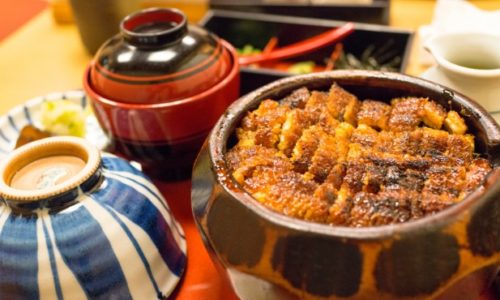If you are unfamiliar with Japanese cooking, your first trip to the grocery store might be a little overwhelming, especially if you don’t read much Japanese. Sure, you can visually identify common ingredients like produce and meat, but when you venture into the inner aisles, you will notice a whole new range of ingredients you never knew about.
You might find yourself standing and staring at the shelves wondering, “What is all this for?”
Japanese Cooking Ingredients Can Be Tricky if You Don’t Know How to Use Them
Knowing the common ingredients like soy sauce and rice vinegar barely scratches the surface of Japanese cooking. Cooking Japanese food requires many complex ingredients that are hard to find outside of Japan, leading to many people not knowing about even the essential ingredients used in daily Japanese cooking. Here are five things you will commonly see in Japanese grocery stores:
1. Shio Koji
To understand what shio koji is, first, we need to know what koji is. Koji is a type of fungus that is used to ferment rice and other grains. It is thought to be an integral part of the making of miso and sake, which are the result of a prolonged fermentation process of soybeans and rice, respectively.
Shio koji is the product of koji inoculated rice, salt and water. Initially, cooked rice is mixed with koji and then dried. Once dried, the koji inoculated rice is mixed with water and salt to create a porridge-like consistency used mainly as a meat marinade. It is a powerful meat tenderizer, meaning you can rub a generous amount on any choice of meat, leave it for a few hours or overnight, and you can have a flavorful and tenderized piece of meat. It can also be used to make pickles.
You can make shio koji from scratch by buying the dried grain koji and mixing it with salt and water. However, you must be careful when making it on your own, as using too little salt could make the mixture go bad quickly. You need a specific amount of rice koji-to-salt ratio to make the mixture properly. If you are unsure of your shio-koji-making skills, you can always find options in the grocery store.
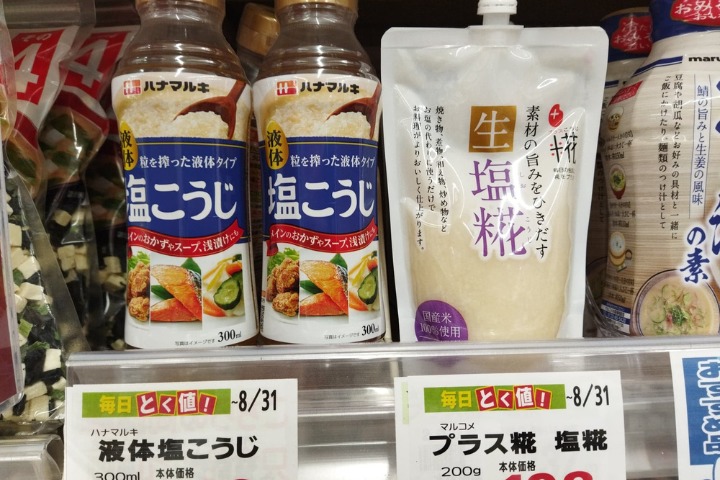
Photo credit: Author
2. Dashi
Simply put, dashi is a term used to describe a whole range of stocks. Dashi is mainly made by boiling kombu ( dried kelp), katsuobushi (dried fish shavings), dried sardines or anchovies, and shiitake mushrooms. This stock base is used for noodle broth, miso and even Japanese omelets. Therefore, knowing about this extremely versatile broth is important as it is the source of the umami flavor in many Japanese foods.
Luckily, you can easily find dashi stock packets and powder in grocery stores nowadays, so you don’t have to worry about making it all from scratch.
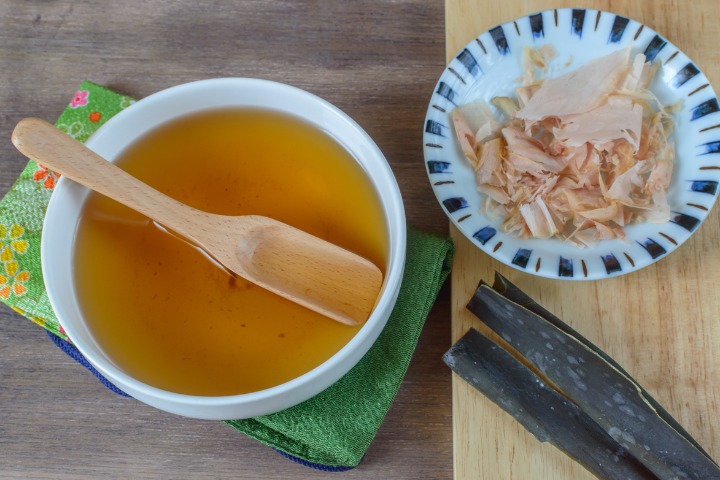
Photo credit: canva.com
3. Hijiki
At first glance, hijiki might seem a bit strange because it appears like chopped-up black noodles. However, hikiji is a type of seaweed! This particular seaweed is most commonly used in making a type of salad. The salad typically consists of hijiki, soybeans, carrots, lotus root and fried tofu. Although simple, the hijiki provides a wonderful textural addition to this salad. You might want to try it out if you are bored of typical everyday salads.
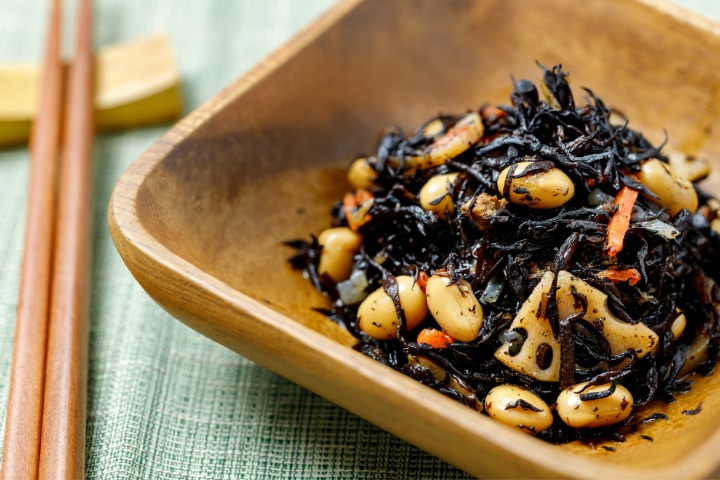
Photo credit: canva.com
4. Tsukemono
The term tsukemono literally means picked foods. In Japanese grocery stores, you will commonly find a colourful assortment of packaged vegetables in the refrigerated section. These might include anything from pickled garlic to eggplants. You might wonder why the daikon radish has suddenly turned yellow, or the eggplants have turned completely blue. But don’t be alarmed as all of these are perfectly edible and eaten as side dishes.
Not all of them taste the same, so don’t quit trying to eat Japanese pickles if you don’t like one of two of them. Try out a whole variety to find which one you like best!
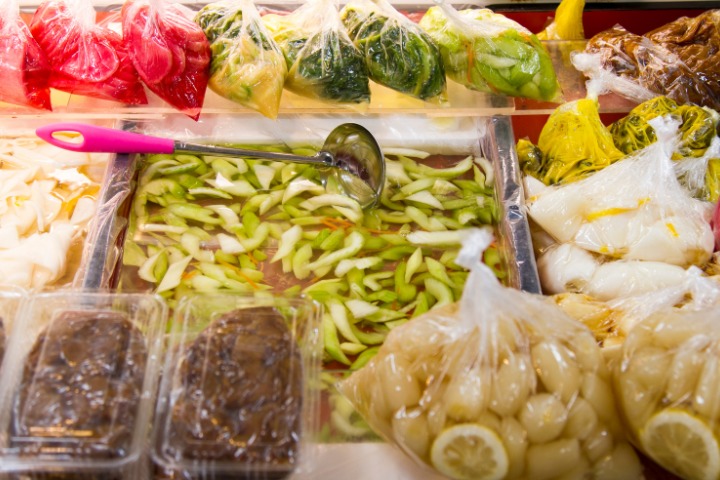
Photo credit: canva.com
5. Mentsuyu
If you don’t read Japanese, you can easily mistake some of these bottles for soy sauce because the colors are similar. However, these bottles actually contain a soup base, particularly for soba and udon noodle dishes. Although it contains some similar ingredients to dashi stock, the mentsuyu stock is slightly different because it also contains sake and mirin. These bottles are concentrated soup bases that need to be diluted with water. Mentsuyu can also be used as a cold soba noodle dipping sauce without diluting it with water.
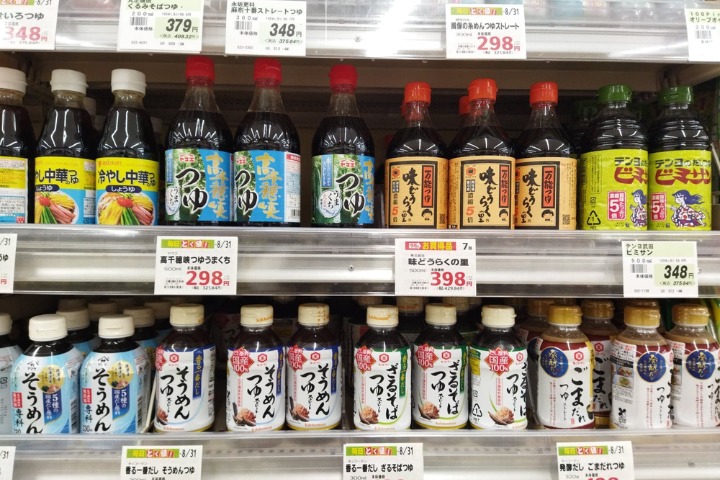
Photo credit: Author
Don’t Be Intimidated to Try Out Japanese Cooking!
Japanese food is rich in flavor and diversity if you know how to cook it correctly. Although it might seem safer to stick to familiar foods, you might be missing out on some very delicious finds in your grocery store! So make sure to venture into the inner aisles of your grocery store on your next visit!
Related articles:
- What is Goya and How do You Use It in Recipes?
- Three Budget-Friendly Recipes Using Tsuyu
- Japanese Cooking: Best Classes in English in Tokyo
- Surume And Other Weird Traditional Japanese Snacks
- A Quick Guide to Different Types of Tofu
Featured photo credit: canva.com





